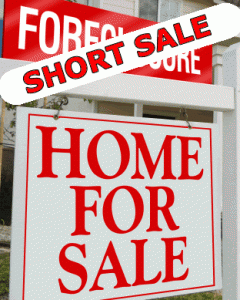
The distressed property market continued to stabilize in the second quarter, according to RealtyTrac's latest U.S. Foreclosure Sales Report.
By Peter Ricci
Distressed sales accounted for 23 percent of all residential housing sales in the second quarter, according to RealtyTrac’s Q2 2012 U.S. Foreclosure Sales Report.
That total is up from a 22 percent share in the first quarter and 19 percent in the second quarter of 2011. Interestingly, though the share of distressed sales increased in the second quarter, the total number of sales fell by a substantial number, decreasing by 12 percent from the first quarter and 22 percent from the second quarter of 2011.
Q2 2012 U.S. Foreclosure Sales Report – Inventory Shortage
According to the other data in RealtyTrac’s U.S. Foreclosure Sales Report, the distressed property market is experiencing the same issues with low housing inventory as the non-distressed housing market:
- The average sale price for distressed home sales was up 6 percent quarterly and 7 percent yearly, which is the first annual increase for average sale price in two years and the biggest since Q4 2006.
- The gap between REO and short sales continued to shrink, with REO sales outnumbering short sales by only 9,833, the smallest difference in nearly five years.
- “There is a limited supply of available foreclosure inventory to choose from in many markets,” said Daren Blomquist, RealtyTrac’s Vice President. “Given this shortage of supply and the seasonally strong buyer demand in the second quarter, it’s no surprise that the average foreclosure-related sales price increased both on a quarterly and annual basis.
Pre-foreclosure/REO Sales Both Down
Furthermore, U.S. Foreclosure Sales Report also found that sales for both pre-foreclosure and REO properties were down in the second quarter, and by some measures, by a substantial amount:
- Pre-foreclosure sales were down 10 percent from the first quarter and 9 percent from 2011, while REO sales were down 13 percent from 2012’s first quarter and 31 percent from 2011’s second quarter.
- Though sales were down, prices increased for both property types; for pre-foreclosure, average sales price was up 5 percent from the first quarter, and for REO sales, it was up 6 percent from the first quarter and 10 percent from 2011’s second quarter.
Ultimately, this is all good news. As we (and many others) have noted before, the housing inventory coming in to balance is arguably the most important component of a real estate recovery, and less distressed sales will be a big part of that.
